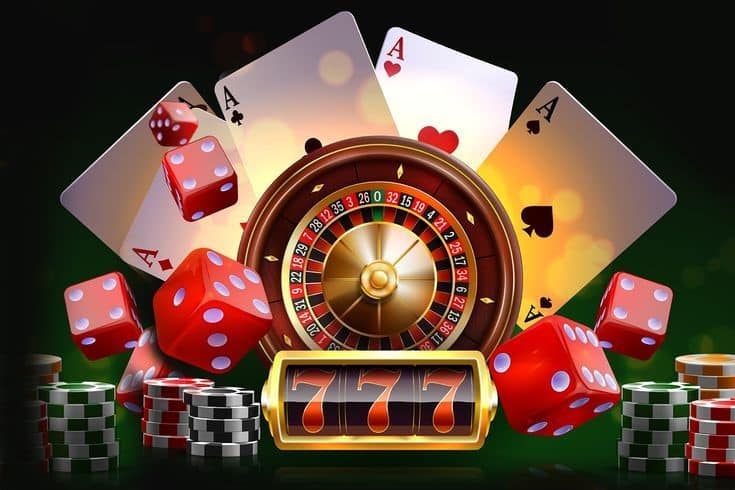
Casino games have long captivated people’s attention, drawing participants into a universe filled with chance, strategy, and the allure of adventure. Each activity is painstakingly crafted not just for entertainment, but also to inspire particular emotional responses that keep participants involved and invested. Understanding the motivations behind these designs reveals much about how human psychology plays a crucial role in the gaming experience.
From the vivid lights and vibrant sounds to the complex layering of systems and rewards, casino games are designed to create an atmosphere of anticipation and anticipation. Game designers leverage psychological principles to influence player behavior, whether through the use of jackpots, almost wins, or social connections. By examining these factors, we can better appreciate how casino games fulfill not just a desire for entertainment, but underlying psychological needs for thrill and uncertainty.
Grasping Gamer Behavior
Casino games are crafted with a deep comprehension of player psyche, which is essential for attracting and keeping players. The excitement of the game, combined with the expectation of winning, establishes a strong attraction. Game designers utilize elements like sonic elements, colorful graphics, and engaging gameplay to capture attention and elicit emotional responses. These sensory elements enhance the immersive experience, making players feel more attached in the game.
Another significant aspect of player behavior is the concept of risk/reward dynamics. Casino games often balance high-risk scenarios with the potential for considerable rewards, which can cause the phenomenon known as near-miss effect. non GamStop casino When players come near to winning, the brain secretes dopamine, bolstering their behavior and prompting them to continue playing in quest of that hard-to-reach win. This cycle of hope and letdown plays a key role in how games are designed and promoted.
Lastly, social elements also play a critical role in player behavior at casinos. Many games are crafted to be played in teams or alongside other players, nurturing a sense of community and shared experience. The community engagement inherent in games like poker enhances enjoyment and can lead to longer play sessions. Designers capitalize on this by crafting environments that encourage players to remain, connect, and come back, making the overall casino experience more inviting.
The Role of Imagery and Sound
Visuals and audio play a crucial role in elevating the player’s experience within casino games. Designers utilize bright colors, eye-catching graphics, and captivating animations to capture players’ attention and maintain their interest. The use of themes, such as exploration or luxury, helps create an enthralling atmosphere that takes players into another world. By connecting to the senses, these elements add to a intensified emotional response, prompting players to interact more profoundly with the games.
Sound design is just as important in reinforcing the experience of casino games. The combination of background music, sound effects for successful combinations, and environmental noises creates an auditory landscape that keeps players fascinated. Sounds associated with victories, such as ringing bells or festive music, evoke feelings of excitement and satisfaction, prompting players to continue playing. These sound cues are carefully placed to amplify the excitement of the game and create a more immersive experience.
Additionally, the alignment of visuals and sound is important for supporting the game’s overall concept and atmosphere. Each element should align harmoniously to create a cohesive experience that draws players in. The effective use of this synergy not only improves user enjoyment but also increases the likelihood of return play, as players become more engaged in the immersive world that the gambling games offer. This thoughtful combination of visuals and sound ultimately enhances player engagement and commitment.
Reward Systems and Participation
The development of casino experiences significantly relies on reward structures to ensure participants engaged and coming back for additional experiences. These systems are based in psychological theories that take advantage of human behavior and motivation. Participants are often motivated by the excitement of success, which is supported by instant responses through the game’s design. This prompt satisfaction not just improves the overall experience but also fosters a feeling of achievement, encouraging participants to continue participating in hopes of bigger rewards.
Gaming establishments utilize various reward structures, including large payouts, bonuses, and increased rewards, to captivate participants. These features create a layer of thrill that maintains engagement. Additionally, the unpredictability of outcomes plays a crucial role in sustaining attention. The variable reward system, where successes are unpredictable but occur often enough, keeps participants on edge and motivated to keep playing. This loop of hope and expectation is essential to the success of casino games.
In addition, community aspects, such as competitive events and collaborative options, enhance the participation factor by tapping into the competitive nature of players. The shared experience of gaming with others can intensify the excitement of success and create a sense of community within the gaming space. By combining these community elements with efficient incentive structures, casino games don’t just offer entertainment but also foster a deeper bond among players, reinforcing their loyalty to the gaming experience.
